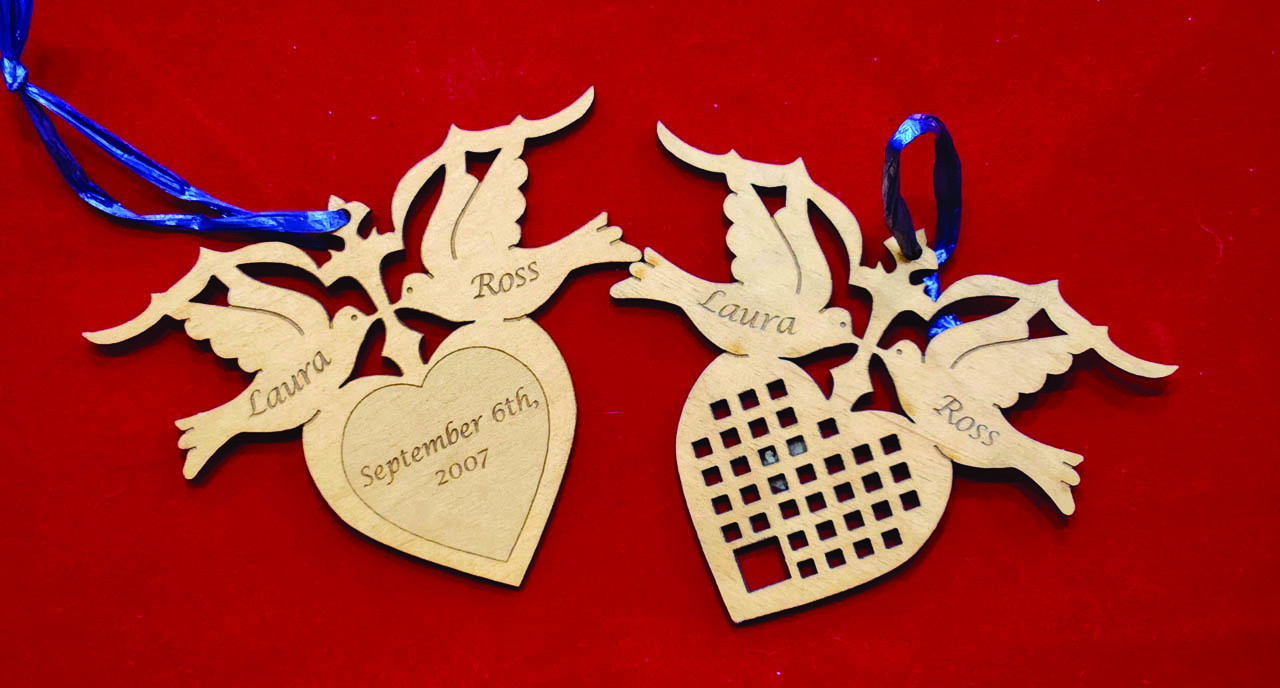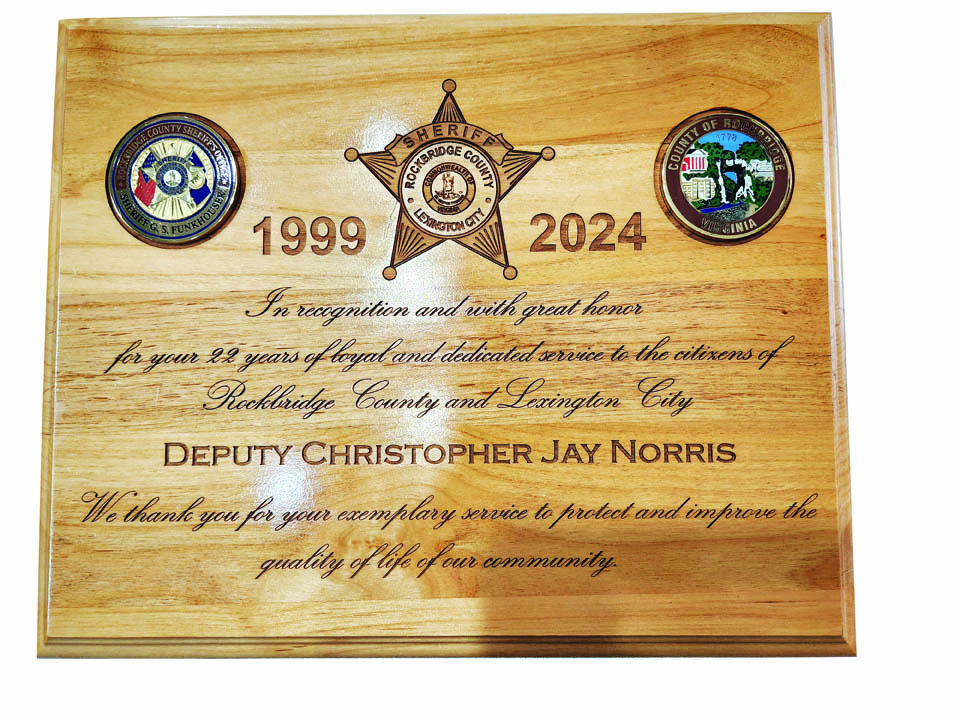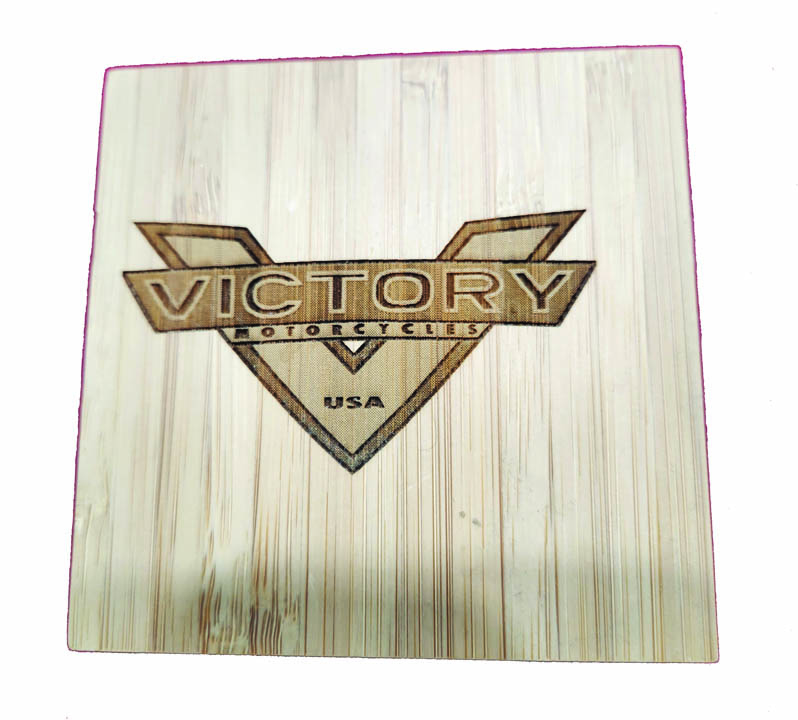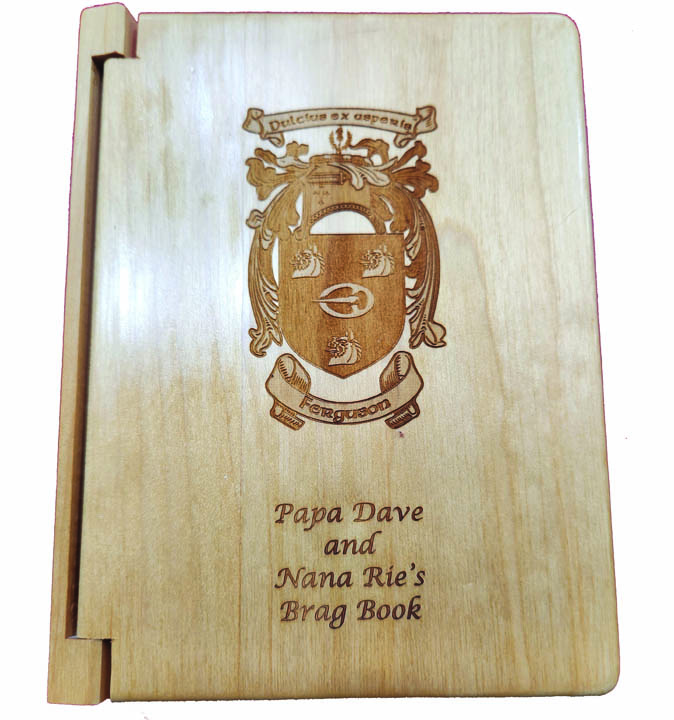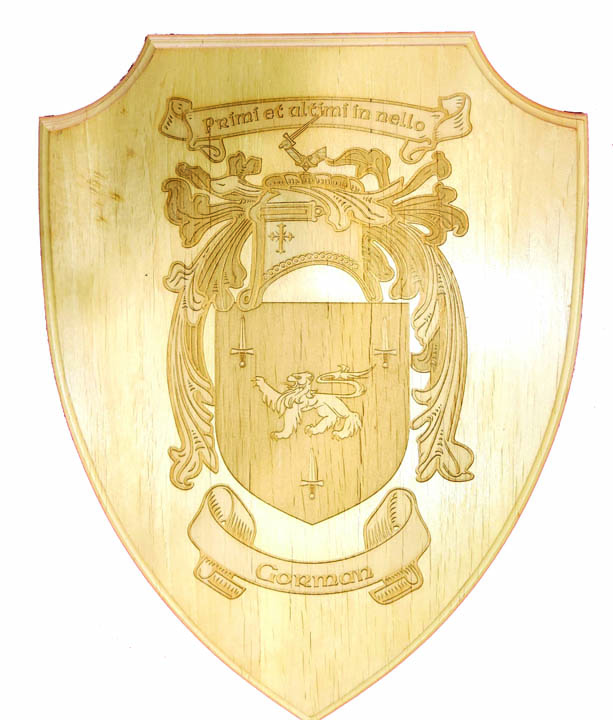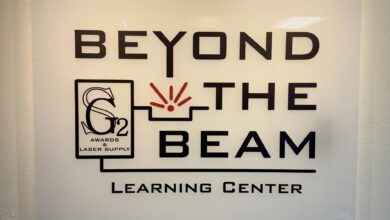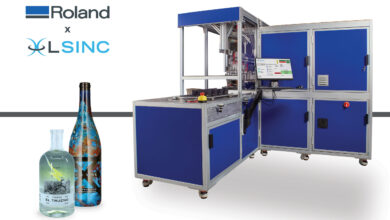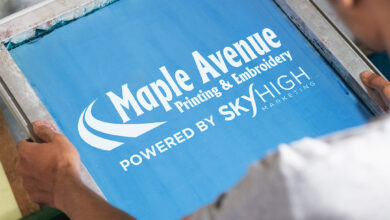I really enjoy working with my two engraving machines. The variety of materials I work with is always interesting, and dealing with such an eclectic group of customers, or as my wife describes them “friends who shop with us,” can be challenging but so rewarding.
I have always preferred working with wood. The natural variations in shade, grain, and texture produce endlessly different results, even if you’re doing multiple pieces with the same graphic. As always, personalizing gifts can open up a whole new group of customers. Remember, although the term “personalizing” might be suggestive of a birthday present or the like, our ability to use a laser engraver gives us options we can then offer our customers for birthdays, anniversaries, weddings, retirement, etc. Often you can take one product, such as Christmas ornaments or wedding favors, for example, and personalize those.
As we know, we can get all varieties of wood: alder, maple, ash, blue pine, cherry, hickory, mahogany, poplar, various oak species, etc. There’s a huge variety of woods readily available, each offering its own unique characteristics. I regularly order samples from a supplier who has all of these types available, as well as some more specialized species. Some of them won’t produce the results I require for my standard jobs, but many of them give me the opportunity to offer things like color fills, inlays, and so on. Hybrid pieces are also interesting — a wooden frame holding an engraved mirror or a plaque incorporating challenge coins.
Gifts can appear in all sorts of shapes, too. Coat hangers, boxes, bottle hangers, photograph albums, business card holders, and more. The more things we can think of and obtain easily make our offerings more unique. Customers often come in with something they would like to have engraved.
The basics of working with wood
So, we have established there are all sorts of things we can produce and different woods we can produce them from. What do we need to know before we start? The basics are: speeds, PPI (points per inch), and power. Do we want varying depth or a uniform depth? The real fun starts when we’re using a different type of wood than we’re used to or something other than a piece of sheet stock or a plaque.
If you are purchasing the material, make sure you order enough that you can experiment if you’ve never done it before or if you are dealing with a new, complex graphic. If you’re working with either material or a graphic your customer has supplied, you’d be advised to try the engraving on a different piece to check shading, depth, etc. I will usually run/waste two or three pieces getting the result just right. If you’re in any doubt as to the finished results, and you can get ahold of the customer, let them see your test pieces before you run something that the customer doesn’t like.
With anything being inlaid, for example, make sure your depth is sufficient to hold the piece without making the recess too deep. With any wood I’ve worked with, I only make two or (rarely) three passes to get the depth I need. I’ve found that by trying to go too deep, I end up with a surface that’s extremely uneven and results in making it difficult to get the piece level and affixed properly. Secondary processes are workable but add to time and cost.
Speaking of time and cost, make sure you are pricing the job properly. Some exotic woods like purple heart can be much more expensive. Different woods require different settings and take longer to engrave. Sometimes you may want to make a number of passes. Don’t be embarrassed to charge more for a one-off or something that takes longer to set up and produce. For a custom graphic that you may need to redraw or trace, build that time into your cost.
There are a lot of different tricks I’ve learned over the years to enhance the finished result. I run two passes on all my wood. The first pass is focused to the nominal height, and for the second I bring the piece “out of focus” (closer to the beam), a little. I reduce the nominal settings to allow for the second pass. On different wood, but particularly bamboo, I take the engraving head as much as ¼” closer to the piece. This makes the engraving much darker. Bamboo can also benefit from the two-pass approach.
Wrapping up
As in any market segment, be familiar with your community and make sure that different groups and organizations know what you can do. This can lead to corporate or personal orders. If you are attending festivals or other events away from your shop, take plenty of examples demonstrating the different ideas you can offer. If you are an awards or trophy store, personalized gift items are a way to increase sales — just make sure passers-by know that you can offer this feature.
I hope some of the photos with this article offer some new ideas that you can have fun with while making money!
